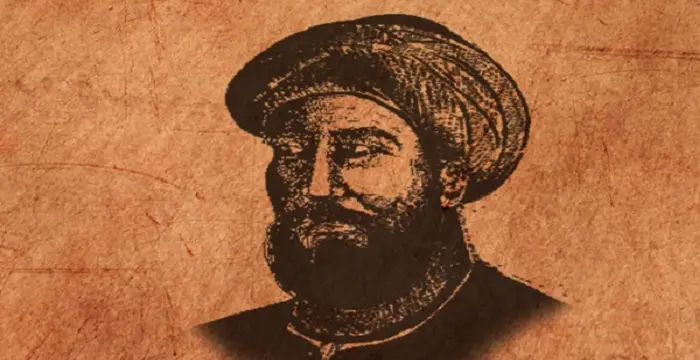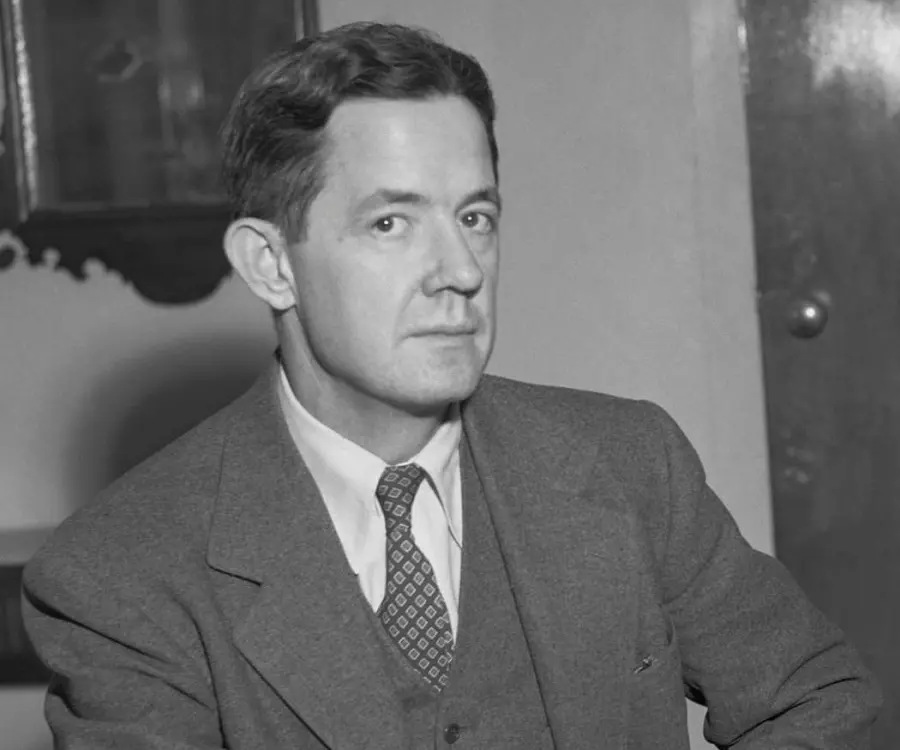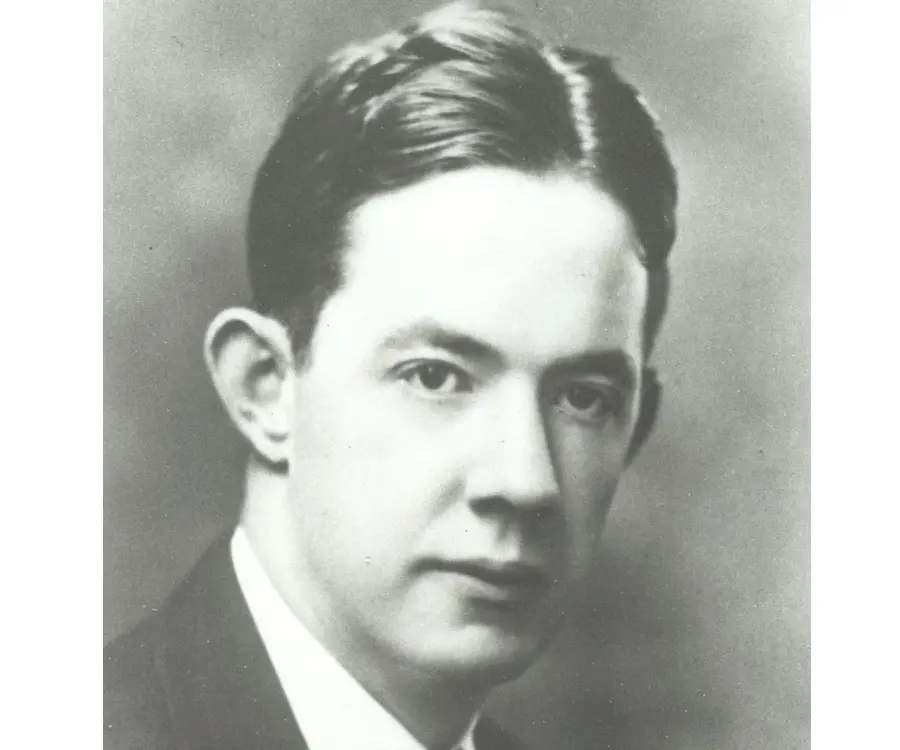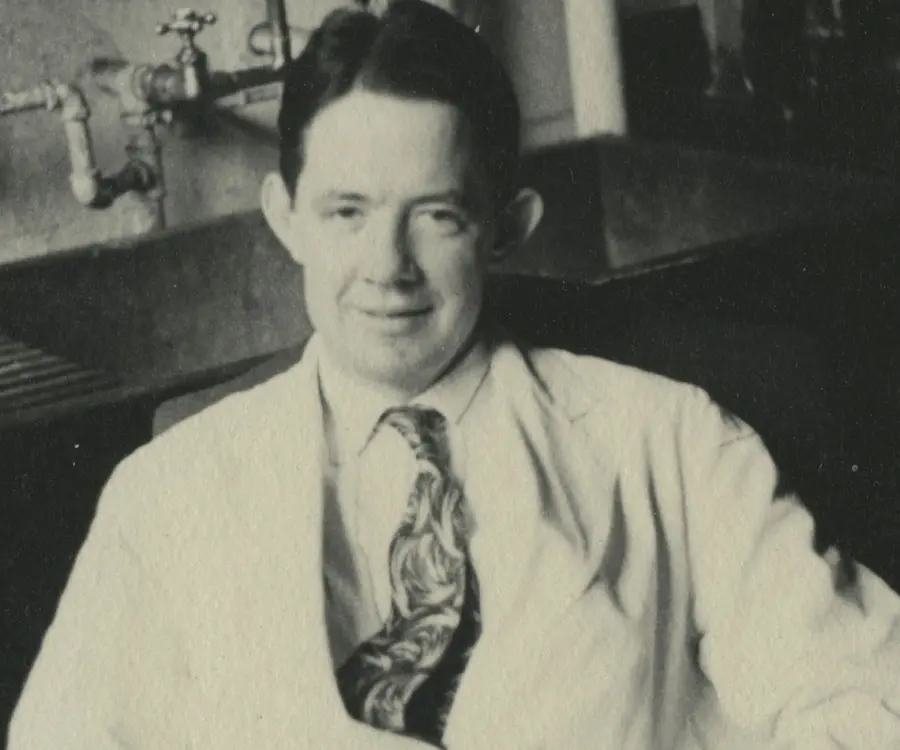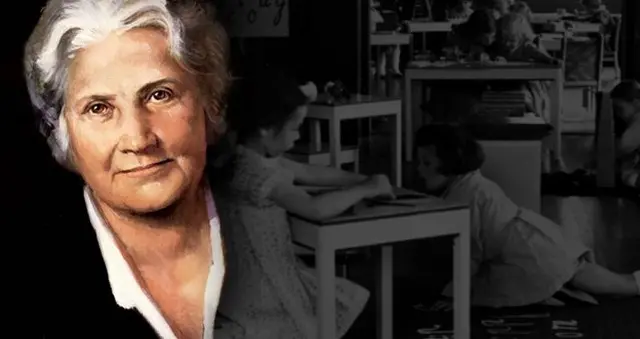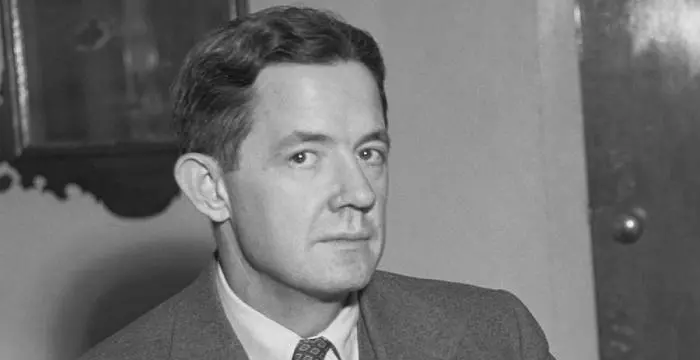
Alfred Blalock - Surgeons, Family and Family
Alfred Blalock's Personal Details
Alfred Blalock was an American surgeon famous for his work on shock and blue baby syndrome
| Information | Detail |
|---|---|
| Birthday | April 5, 1899 |
| Died on | September 15, 1964 |
| Nationality | American |
| Famous | Physicians, Surgeons |
| City/State | Georgia |
| Siblings | Edgar Blalock, Elizabeth Blalock |
| Childrens | Alfred Dandy Blalock, Mary Elizabeth Blalock, William Rice Blalock |
| Universities |
|
| Cause of death |
|
| Birth Place | Culloden, Georgia, United States |
| Gender | Male |
| Father | George Blalock |
| Mother | Martha Davis Blalock |
| Sun Sign | Aries |
| Born in | Culloden, Georgia, United States |
| Famous as | Surgeon |
| Died at Age | 65 |
// Famous Surgeons
Al-Zahrawi
Al-Zahrawi, was an illustrious medieval Arab Muslim physician and surgeon. Check out this biography to know about his childhood, family life, achievements and interesting facts about him.
Russell M. Nelson
Russell M. Nelson is an American religious leader, author, and philanthropist. Check out this biography to know about his birthday, childhood, family life, achievements and fun facts about him.
René Gerónimo Favaloro
René Gerónimo Favaloro was a renowned Argentinean cardiovascular surgeon. Check out this biography to know about his childhood, family life, achievements and other facts related to his life.
Alfred Blalock's photo
Who is Alfred Blalock?
Alfred Blalock was an American surgeon famous for his work on shock and blue baby syndrome. Blalock always believed that he was a failure from a very young age, but he never really comprehended and gauged his own aptitude and perseverance that would help in creating remarkable advances in the domain of surgery and science. On receiving his M.D. from Johns Hopkins School of Medicine, he first tried to obtain surgical residency at the same institute; but failed to do so because of his average grades. Eventually, he moved to School of Medicine at Vanderbilt as Chief Residency in Surgery, concurrently working as an instructor, reaching the position of Professor of Surgery within eleven years. Having a good eye for talent, he appointed Vivien Thomas, an African-American carpenter, as his laboratory assistant. They started working on the medical condition of shock, finding cause and remedy for it, subsequently saving thousands of lives during the WWII. Later, when he moved to Johns Hopkins as the Director Department of Surgery, he took Thomas along and there they started working on blue baby syndrome with Helen Taussig, developing a surgical method to cure it. Blalock was also a great teacher and mentor. For his contribution to the medical science, he was honored with numerous awards and honorary degrees and was elected to many national and international medical societies.
// Famous Physicians
Al-Zahrawi
Al-Zahrawi, was an illustrious medieval Arab Muslim physician and surgeon. Check out this biography to know about his childhood, family life, achievements and interesting facts about him.
Jabir Ibn Hayyan
Jabir Ibn Hayyan was a medieval era polymath. Check out this biography to know about his life, works and achievements.
Maria Montessori
Maria Montessori was a physician and educator who developed the approach of Montessori education. This biography of Maria Montessori provides detailed information about her childhood, life, achievements, works & timeline.
Childhood & Early Years
Alfred Blalock was born on April 5, 1899, in the small town of Culloden in Georgia, USA. His father, George Zadock Blalock, was a cotton plantation owner and a merchant. He was a strict disciplinarian, laying great importance on education. His mother was Martha Blalock nee Davis.
Alfred was born eldest of his parents’ five children; two of his younger siblings being Elizabeth and Edgar. A gentle child with a charming smile, he was very diligent in his studies, refusing to go to bed unless he had perfected his homework. He respected his father very much.
When he was eleven years old, due to his father’s illness, the family moved to nearby town of Jonesboro to take advantage of its better medical facilities. Here he studied at the local school up to grade nine, thereafter moving to Georgia Military School (now Woodward Academy) at fourteen.
In the fall of 1915, Alfred entered Georgia University directly as a sophomore, skipping his freshman year. Along with receiving good grades, he also enjoyed a vibrant social life at the University.
In his senior year, he became associate editor of the year book; later the secretary and treasurer of the senior class. A good tennis player, he regularly participated in college tournaments. He was also a member of the college debating society, junior cabinet, and the Sigma Chi fraternity.
In 1918, Alfred Blalock graduated from the Georgia University with an A.B. degree and in fall entered Johns Hopkins School of Medicine. Here too he continued with his extracurricular activities, running a bookstore to earn a major part of his expenses at the School.
He also played a good deal of tennis and golf, leading to his lifelong friendship with Tinsley Harrison, who would later specialize in cardiovascular medicine. Sometime now, he also became a member of Alpha Omega Alpha.
According to Harrison, Alfred Blalock never wasted his time, chatting or playing cards, as most students did. If he was not attending his store or playing, he would study. Yet, he did not receive very high grades, graduating in 1822 with a position close to the middle of his class.
Internship
By now, Alfred Blalock had realized that his skill lay in surgery and therefore on receiving his MD degree, he first tried to obtain surgical residency at Johns Hopkins. Since surgical internship was awarded on the basis of class standing, he failed to obtain one. Nonetheless, he decided to wait.
He began working as a House Medical Officer-Urology under Hugh Hampton Young, doing sufficiently well to earn an Assistant Residency in the General Surgical Service in 1923. Unfortunately, he failed to obtain a reappointment in the following year, a fact that he could never reconcile with.
In July 1924, he became an Extern in Otolaryngology, working, among other topics, on regeneration of the recurrent laryngeal nerves of dogs. It led to the publication of his first paper, ‘The Effects of Changes in Hydrogen Ion Concentration on the Blood Flow of Morphinized Dogs’ (1925).
At Vanderbilt University
In September 1925, Alfred Blalock moved to the newly reorganized School of Medicine at Vanderbilt, Nashville as Chief Residency in Surgery. He had initially hoped to be put be in charge of the surgical pathology laboratory, but was placed in the experimental laboratory.
In 1926, he published his second paper ‘Partial Tracheal Obstruction, An Experimental Study on the Effects on the Circulation and Respiration of Morphinized Dogs’. Thereafter, he started working on hemorrhage and trauma and its effect on the circulation of dogs.
In 1927, he was diagnosed with tuberculosis and sent to Trudeau Sanatorium in Saranac Lake for one year stay. On his recovery in 1928, he went to Cambridge, England, where he worked in the Department of Physiology, returning to Vanderbilt later in the same year as Assistant Professor of Surgery.
On his return, Blalock began his studies on the medical condition of shock and its effect on the oxygen content of blood. In 1930, he was promoted to the post of Associate Professor. With increased responsibilities Blalock felt he needed a new lab assistant and found it in a black carpenter named Vivien Thomas.
Although officially appointed as a janitor, Thomas started working as a lab technician, quickly learning surgical procedures. Very soon, he also learned how to carry out experiments, and record data for Blalock's research. Slowly, Blalock began to grant Thomas more autonomy.
Blalock and Thomas undertook extensive research into the causes of hemorrhagic and traumatic shock. By mid 1930s, Blalock proved that fluid loss outside the vascular bed causes shock and can be treated by fluid replacement, disproving the traditional belief that the condition was caused by toxin in the blood.
They next started experiments in vascular and cardiac surgery. In 1939, Blalock, now a full Professor, published the result as ‘Experimental Observations on the Effects of Connecting by Suture the Left Main Pulmonary Artery to the Systemic Circulation’. It established him as a reputed surgeon and researcher.
Return to Hopkins
In 1940, Alfred Blalock was approached by the Department of Surgery at Hopkins School of Medicine for the position of its chairman. He happily accepted the offer on the precondition that Vivien Thomas should also accompany him, a request that was instantly granted.
In 1941, Blalock joined Johns Hopkins School of Medicine as Chairman of the Department of Surgery. He was also the Chief of Surgery and Professor. Immediately, he began to operate on daily basis, besides being actively concerned with the teaching of the students and training of the medical staff.
Later, he started Friday noon clinic, which became famous for its clinical instructions. Meanwhile, he had George Duncan, an assistant resident in surgery at Vanderbilt, brought to Hopkins to enable him to continue his experiments on shock.
In 1943, Blalock was called in for a consultation by the Professor of Pediatrics Dr. Edward A. Park. He was to see a child with congenital lung cyst. While he recommended operation, Dr. Park asked him if he thought something could be done for coarctation or congenial narrowing of aorta.
To avoid any kind of failure, he now started a series of experiments, finally undertaking the operation for coarctation with Dr. Edward Park in 1944. By that time, similar operation had been carried on by doctors in Sweden and Boston, thus depriving him of the honor of being the first.
At a conference after the operation, as he was discussing the result of his work, he was approached by Dr. Helen Brooke Taussig, a pediatric cardiologist, who told him about cases involving Tetralogy of Fallot. He now began to concentrate on this new problem.
Tetralogy of Fallot, also known as blue baby syndrome, is a complex four-part heart anomaly, thought to be untreatable until then. Blalock now started working on it along with Taussig and Thomas, performing the first surgery on November 29, 1944 on a fifteenth month old child named Eileen Saxon.
Although the operation was successful, the child became cyanotic once again. They now tried to put another shunt on the other side of the chest; but the baby, who was not yet two, could not survive, and died a few days afterwards.
Although Eileen died, she lived long enough to prove that the operation could succeed. They later discovered that the process worked best on older children. However, Eileen could not have survived in any case, because by the time she was put on the operation table she was dying.
In 1945, Blalock published his report on ‘blue baby operation’ jointly with Taussig. It created an immediate interest in the medical fraternity. Along with stream of patients seeking treatment, he also had to handle request for innumerable teaching appearances as well lectures on the subject.
In spite of increased responsibilities, Blalock continued with his experiments. In 1948, working with Rollins Hanlon, Blalock created a technique that enabled surgeons to overcome the transposition of the great blood vessels of the heart.
By 1950s, he had performed over 1,000 surgeries to correct congenital heart defects. However, surgery was not his only claim to fame. He was also great teacher and a mentor, who could bring out the best of his students.
At Hopkins, he trained no less than 38 chief residents, in addition to nine chairmen of departments and 10 division chiefs. Many of his students later became well-known cardiac surgeons.
In 1955, Alfred Blalock was made Chairman of the Medical Board of The Johns Hopkins Hospital, a position he held until his retirement in 1964. Thereafter, he was made the professor and surgeon-in-chief emeritus at the same hospital.
Major Works
Alfred Blalock is best remembered for developing the surgical procedure for treatment of Tetralogy of Fallot or blue baby syndrome. In this syndrome, the blood is shunted past the lungs, which creates oxygen deprivation in the body, leading to a blue pallor.
Dr, Taussig, who had dealt with many such babies, suggested that the defect could be cured only if the level of blood flow to the lungs could be increased by somehow reconnecting ‘the pipes’. Both Thomas and Blalock realized that the answer lay in a procedure they had developed long back at Vanderbilt.
Thomas was then charged with creating the blue-baby syndrome in dogs and then correcting the condition by operation. After working with 200 dogs for two years, a corrective procedure, later known as ‘Blalock–Thomas–Taussig shunt’, was developed, resulting in the operation on fifteen months old Eileen.
Awards & Achievements
In 1947, Alfred Blalock was made a Chevalier de la République Française, Ordre National de la Légion d'Honneur
In 1948, he received the Passano Award jointly with Dr. Taussig. Also in the same year, he was made Baltimore’s ‘Man of the Year’.
In1949, he was awarded with the René Leriche Prize of the International Society of Surgery as the world's outstanding surgeon in vascular surgery
In 1950, he received Matas Award.
In 1953, he received American Medical Association Distinguished Service Award.
In 1954, Blalock received the Albert Lasker Clinical Medical Research Award "For distinguished contributions to cardiovascular surgery and knowledge" jointly with Helen Taussig and Robert Gross.
In 1959, he and Taussig jointly received Gairdner Foundation Award (Toronto) totaling $25,000.
Personal Life & Legacy
Alfred Blalock married Mary Chambers O'Bryan on 25 October 1930. They had three children: William Rice, Mary Elizabeth, and Alfred Dandy. They remained married until, Mary’s death in 1958.
In 1959, Blalock married Alice Waters, a close neighbour, remaining married till his death.
On September 15, 1964, Alfred Blalock died of cancer, at the age of 65.
The Alfred Blalock Clinical Sciences Building at Hopkins Hospital was named after him
Trivia
His sister Elizabeth had said, as a child, Blalock would …“rather mother use the hairbrush on him than father look at him hard.”
// Famous Cancer Celebrities peoples
Jacob Elordi
Jacob Elordi is an Australian actor. Let’s take a look at his childhood, family, personal life, career, etc.
Riele Downs
Riele Downs is a Canadian-American actress & Musical.ly star. Let’s take a look at her family and personal life including age, birthday, net worth, boyfriends and fun facts.
Yammy Xox
Check out all that you wanted to know about Yammy Xox, the famous British YouTube Personality; her birthday, her family and personal life, her boyfriends, fun trivia facts and more.
Alfred Blalock's awards
| Year | Name | Award |
|---|---|---|
Other | ||
| 0 | - Gairdner Foundation | |
| 0 | - International Award | |
| 0 | - Gairdner Foundation International Award | |
| 0 | - Lasker-DeBakey Clinical Medical Research Award | |
Alfred Blalock biography timelines
- // 1822According to Harrison, Alfred Blalock never wasted his time, chatting or playing cards, as most students did. If he was not attending his store or playing, he would study. Yet, he did not receive very high grades, graduating in 1822 with a position close to the middle of his class.
- // 5th Apr 1899Alfred Blalock was born on April 5, 1899, in the small town of Culloden in Georgia, USA. His father, George Zadock Blalock, was a cotton plantation owner and a merchant. He was a strict disciplinarian, laying great importance on education. His mother was Martha Blalock nee Davis.
- // 1915In the fall of 1915, Alfred entered Georgia University directly as a sophomore, skipping his freshman year. Along with receiving good grades, he also enjoyed a vibrant social life at the University.
- // 1918In 1918, Alfred Blalock graduated from the Georgia University with an A.B. degree and in fall entered Johns Hopkins School of Medicine. Here too he continued with his extracurricular activities, running a bookstore to earn a major part of his expenses at the School.
- // 1923He began working as a House Medical Officer-Urology under Hugh Hampton Young, doing sufficiently well to earn an Assistant Residency in the General Surgical Service in 1923. Unfortunately, he failed to obtain a reappointment in the following year, a fact that he could never reconcile with.
- // Jul 1924 To 1925In July 1924, he became an Extern in Otolaryngology, working, among other topics, on regeneration of the recurrent laryngeal nerves of dogs. It led to the publication of his first paper, ‘The Effects of Changes in Hydrogen Ion Concentration on the Blood Flow of Morphinized Dogs’ (1925).
- // Sep 1925In September 1925, Alfred Blalock moved to the newly reorganized School of Medicine at Vanderbilt, Nashville as Chief Residency in Surgery. He had initially hoped to be put be in charge of the surgical pathology laboratory, but was placed in the experimental laboratory.
- // 1926In 1926, he published his second paper ‘Partial Tracheal Obstruction, An Experimental Study on the Effects on the Circulation and Respiration of Morphinized Dogs’. Thereafter, he started working on hemorrhage and trauma and its effect on the circulation of dogs.
- // 1927 To 1928In 1927, he was diagnosed with tuberculosis and sent to Trudeau Sanatorium in Saranac Lake for one year stay. On his recovery in 1928, he went to Cambridge, England, where he worked in the Department of Physiology, returning to Vanderbilt later in the same year as Assistant Professor of Surgery.
- // 1930On his return, Blalock began his studies on the medical condition of shock and its effect on the oxygen content of blood. In 1930, he was promoted to the post of Associate Professor. With increased responsibilities Blalock felt he needed a new lab assistant and found it in a black carpenter named Vivien Thomas.
- // 25th Oct 1930 To 1958Alfred Blalock married Mary Chambers O'Bryan on 25 October 1930. They had three children: William Rice, Mary Elizabeth, and Alfred Dandy. They remained married until, Mary’s death in 1958.
- // 1939They next started experiments in vascular and cardiac surgery. In 1939, Blalock, now a full Professor, published the result as ‘Experimental Observations on the Effects of Connecting by Suture the Left Main Pulmonary Artery to the Systemic Circulation’. It established him as a reputed surgeon and researcher.
- // 1940In 1940, Alfred Blalock was approached by the Department of Surgery at Hopkins School of Medicine for the position of its chairman. He happily accepted the offer on the precondition that Vivien Thomas should also accompany him, a request that was instantly granted.
- // 1941In 1941, Blalock joined Johns Hopkins School of Medicine as Chairman of the Department of Surgery. He was also the Chief of Surgery and Professor. Immediately, he began to operate on daily basis, besides being actively concerned with the teaching of the students and training of the medical staff.
- // 1943In 1943, Blalock was called in for a consultation by the Professor of Pediatrics Dr. Edward A. Park. He was to see a child with congenital lung cyst. While he recommended operation, Dr. Park asked him if he thought something could be done for coarctation or congenial narrowing of aorta.
- // 1944To avoid any kind of failure, he now started a series of experiments, finally undertaking the operation for coarctation with Dr. Edward Park in 1944. By that time, similar operation had been carried on by doctors in Sweden and Boston, thus depriving him of the honor of being the first.
- // 29th Nov 1944Tetralogy of Fallot, also known as blue baby syndrome, is a complex four-part heart anomaly, thought to be untreatable until then. Blalock now started working on it along with Taussig and Thomas, performing the first surgery on November 29, 1944 on a fifteenth month old child named Eileen Saxon.
- // 1945In 1945, Blalock published his report on ‘blue baby operation’ jointly with Taussig. It created an immediate interest in the medical fraternity. Along with stream of patients seeking treatment, he also had to handle request for innumerable teaching appearances as well lectures on the subject.
- // 1947In 1947, Alfred Blalock was made a Chevalier de la République Française, Ordre National de la Légion d'Honneur
- // 1948In spite of increased responsibilities, Blalock continued with his experiments. In 1948, working with Rollins Hanlon, Blalock created a technique that enabled surgeons to overcome the transposition of the great blood vessels of the heart.
- // 1948In 1948, he received the Passano Award jointly with Dr. Taussig. Also in the same year, he was made Baltimore’s ‘Man of the Year’.
- // 1949In1949, he was awarded with the René Leriche Prize of the International Society of Surgery as the world's outstanding surgeon in vascular surgery
- // 1950In 1950, he received Matas Award.
- // 1953In 1953, he received American Medical Association Distinguished Service Award.
- // 1954In 1954, Blalock received the Albert Lasker Clinical Medical Research Award "For distinguished contributions to cardiovascular surgery and knowledge" jointly with Helen Taussig and Robert Gross.
- // 1955 To 1964In 1955, Alfred Blalock was made Chairman of the Medical Board of The Johns Hopkins Hospital, a position he held until his retirement in 1964. Thereafter, he was made the professor and surgeon-in-chief emeritus at the same hospital.
- // 1959In 1959, he and Taussig jointly received Gairdner Foundation Award (Toronto) totaling $25,000.
- // 1959In 1959, Blalock married Alice Waters, a close neighbour, remaining married till his death.
- // 15th Sep 1964On September 15, 1964, Alfred Blalock died of cancer, at the age of 65.
// Famous American peoples
Wentworth Miller
Wentworth Miller is an American actor and screenwriter who achieved recognition for his role in the TV series ‘Prison Break’.
Jason Simpson
Jason Simpson is the son of former NFL running back, broadcaster and actor O. J. Simpson. Check out this biography to know about his childhood, family, life, and little known facts about him.
Melissa Brim
Melissa Brim is the ex-girlfriend of former professional boxer Floyd Mayweather Jr. Check out this biography to know about her birthday, childhood, family life, achievements and fun facts about her.
Skai Jackson
Skai Jackson is an American child actress with huge fan following. Find more about her family & personal life, relationships, facts and more.
Joyce Meyer
Joyce Meyer is a Christian author and speaker. This biography provides detailed information about her childhood, life, achievements, works & timeline
Zoe LaVerne
Zoe LaVerne is an American musical.ly star. Check out this biography to know more about her family, personal life, including her age, birthday, etc.
Alfred Blalock's FAQ
What is Alfred Blalock birthday?
Alfred Blalock was born at 1899-04-05
When was Alfred Blalock died?
Alfred Blalock was died at 1964-09-15
Where was Alfred Blalock died?
Alfred Blalock was died in NA
Which age was Alfred Blalock died?
Alfred Blalock was died at age 65
Where is Alfred Blalock's birth place?
Alfred Blalock was born in Culloden, Georgia, United States
What is Alfred Blalock nationalities?
Alfred Blalock's nationalities is American
Who is Alfred Blalock siblings?
Alfred Blalock's siblings is Edgar Blalock, Elizabeth Blalock
Who is Alfred Blalock childrens?
Alfred Blalock's childrens is Alfred Dandy Blalock, Mary Elizabeth Blalock, William Rice Blalock
What was Alfred Blalock universities?
Alfred Blalock studied at Johns Hopkins University, University of Georgia, Johns Hopkins University School of Medicine
What is Alfred Blalock's cause of dead?
Alfred Blalock dead because of Cancer
Who is Alfred Blalock's father?
Alfred Blalock's father is George Blalock
Who is Alfred Blalock's mother?
Alfred Blalock's mother is Martha Davis Blalock
What is Alfred Blalock's sun sign?
Alfred Blalock is Aries
How famous is Alfred Blalock?
Alfred Blalock is famouse as Surgeon
